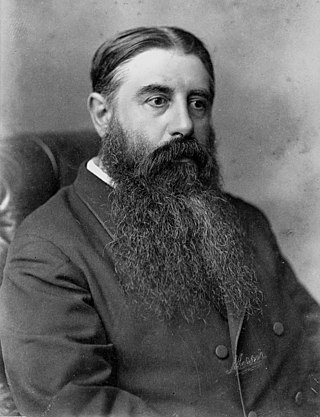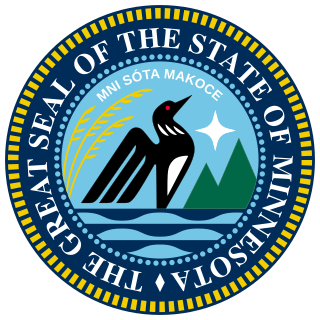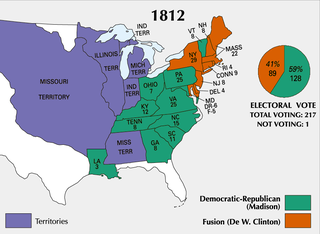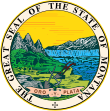
Sir Julius Vogel was the eighth premier of New Zealand. His administration is best remembered for the issuing of bonds to fund railway construction and other public works. He was the first Jewish prime minister of New Zealand. Historian Warwick R. Armstrong assesses Vogel's strengths and weaknesses:
Vogel's politics were like his nature, imaginative – and occasionally brilliant – but reckless and speculative. He was an excellent policymaker but he needed a strong leader to restrain him....Yet Vogel had vision. He saw New Zealand as a potential 'Britain of the South Seas', strong both in agriculture and in industry, and inhabited by a large and flourishing population.

This section of the timeline of United States history concerns events from 1860 to 1899.

The Minnesota House of Representatives is the lower house of the U.S. state of Minnesota's legislature. It operates in conjunction with the Minnesota Senate, the state's upper house, to craft and pass legislation, which is then subject to approval by the governor of Minnesota.

The Territory of Idaho was an organized incorporated territory of the United States that existed from March 3, 1863, until July 3, 1890, when the final extent of the territory was admitted to the Union as Idaho.

Preston Hopkins Leslie was the 26th Governor of Kentucky from 1871 to 1875, and territorial governor of Montana from 1887 to 1889. He ascended to the office of governor by three different means. First, he succeeded Kentucky governor John W. Stevenson upon the latter's resignation to accept a seat in the United States Senate in 1871. Later that year, he was elected to a full term as governor, defeating John Marshall Harlan in the general election. Finally, he was appointed territorial governor by President Grover Cleveland.
More than 1,500 African American officeholders served during the Reconstruction era (1865–1877) and in the years after Reconstruction before white supremacy, disenfranchisement, and the Democratic Party fully reasserted control in Southern states. Historian Canter Brown Jr. noted that in some states, such as Florida, the highest number of African Americans were elected or appointed to offices after the end of Reconstruction in 1877. The following is a partial list of notable African American officeholders from the end of the Civil War until before 1900. Dates listed are the year that a term states or the range of years served if multiple terms.
The Massachusetts Republican Party (MassGOP) is the Massachusetts branch of the U.S. Republican Party.
The New Jersey Republican Party (NJGOP) is the affiliate of the United States Republican Party in New Jersey. It was founded in 1880 and is currently led by Bob Hugin.

The following outline is provided as an overview of and topical guide to the U.S. state of Montana:

Seguin Light is a lighthouse on Seguin Island, in the Gulf of Maine south of the mouth of the Kennebec River, Maine. Established in 1795, it is the second-oldest of Maine's coastal lighthouses, and the only lighthouse in the state housing a first-order Fresnel lens. With its light at 180 feet (55 m) above mean sea-level, the present tower, built in 1857, is its highest of the state's lighthouses. Automated in 1985, the buildings of the light station are now operated as a museum property by a non-profit organization, and are seasonally open to the public via scheduled ferry from Popham Beach in Phippsburg. The light was listed on the National Register of Historic Places as Seguin Island Light Station in 1977.

The following is a partial list of events from the year 1812 in the United States. After years of increasing tensions, the United States declares war on the British Empire, starting the War of 1812.
The Montana state auditor is a constitutional officer in the executive branch of government of the U.S. state of Montana. The state auditor is elected once every four years, concurrent with the state's gubernatorial election and the U.S. presidential election. The current state auditor is Troy Downing, who was first elected in November 2020 and took office in January 2021.










